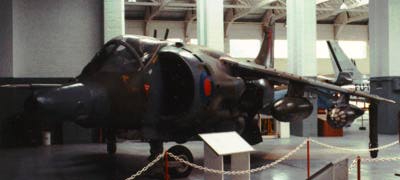
Updated: 1996/12/24 Tue

Bf109 aka the Me109 was the standard German fighter throughout World War II. Although outclassed by the end of the war it was still a capable fighter. The Bf109 was developed in secrecy during the rise to power of the Third Reich at a time when all German aviation was limited to civilian development. It proved itself a capable fighter during the Spanish Civil War and was developed all throughout WWII. A very light and easy plane to fly, the Bf109 suffered from "short legs", in other words a small fuel tank. Coupled with a cramped cockpit and poor high speed handling it nevertheless was the number one production German aircraft.
STATS: (Bf109G6)
Crew: 1 (pilot) Service: 1942-1945 (Axis)
Max Speed: 372kt (685kph) @24,240' (7.6km)
Max Range: 304nm (560km)
Climb: 20,000' in 6.0min
Armaments: 1 x 30mm MK 108 cannon (60 rnd)
2 x 13mm MG 131 mg (300 rnd each)
250lb (113.5kg) bombload under the fuselage
1 x 21mm rocket mortar under each wing

B-17, or the "Fort" was one of the American's standard long range heavy bombers throughout WWII. The multiple gun bays and turrets provided adequate firepower when flown with other bombers in the defensive "box" formation, however it still required fighter escort to ensure survival.
STATS: (B-17G)
Crew: 10 Service: 1942-1945 (USAAF)
Max Speed: 261kt (480kph) @25,000'
Max Range: 1130nm (2080km) Max Altitude: 37,500' (11.43km)
Climb: ft/min
Armaments: 10 x .50 Browning mg throughout the fuselage
9,000lb (4,090kg) bombload

C-47 Also known as the "Dakota" or "Gooney Bird" the C-47 was a standard transport craft used by the allies in WWII.
STATS:
Crew: 3 crew and 28 troops Service: 1940's (Allies) Max Speed: 199kt (368kph) @7,500' (2.29km) Cruise Speed: 161kt (296kph) @10,000' Max Altitude: 23,200' (7.1km) Max Range: 1,304nm (2,400km) Climb: 1,130 ft/min Armaments: none Payload: 8,600lb (3,904kg)

J35 The Drakken, or "Dragon", was one of Sweden's first jet fighters and the first in the world to utilize the double delta wing configuration. Built with the possiblity that it would have to fly from roads or short airstrips it has a very short take-off run. A capable aircraft even today it only lacks a modern avionics suite to make it modern. The Drakken lead to development of Sweden's current front line aircraft, the Viggen and Grippen, both also designed with a double delta configuration.
STATS: (J35F)
Crew: 1 (pilot) Service: 1960 to present(Sweden)
Max Speed: 1,147kt (2,125kph, Mach 2.0) @36,000' (10.98km)
Max Altitude: 65,600' (20.0km)
Max Range: 1,533nm (2,840km) Combat Radius: 304nm (564km)
Climb: 34,450ft/min
Armaments: 1 x 30mm m/55 cannon (90 rnd)
6,393lb (2,900kg) on 9 hardpoints
AAM, bombs, rockets

Harrier A project in the late 60's to develop V/STOL (Vertical/Short Take-Off & Landing) capabilities in a fighter produced the Kestrel which after further modifications became the Harrier. Used by the RAF and RN as a multi- role aircraft it was well suited to carrier operations. Powered by a single large engine in the center of the fuselage, it exhibits hovering capabilitiesby the use of four nozzles and the principal of vectored thrust. Although capable in a close quarters dogfight the Harrier lacks the speed often found in modern air combat. It is excellent at ground support missions and has become the U.S. Marines plane of choice in the form of the updated AV8B Harrier.
STATS: (B.A. Harrier)
Crew: 1 (pilot) Service: 1969-1992 (RAF)
Max Speed: 635kt (1,176kph, Mach 1.11) @sea level
Max Altitude: 51,200' (15.6km)
Max Range: 1,850nm (3,428km) Combat Radius: 360nm (667km)
Climb: 29,000 ft/min
Armaments: 2 x 30mm Aden Mk.4 cannon (150 rnd each)
8,000lb (3,269kg) on 7 hardpoints
AAM, bombs, LGB, rockets
